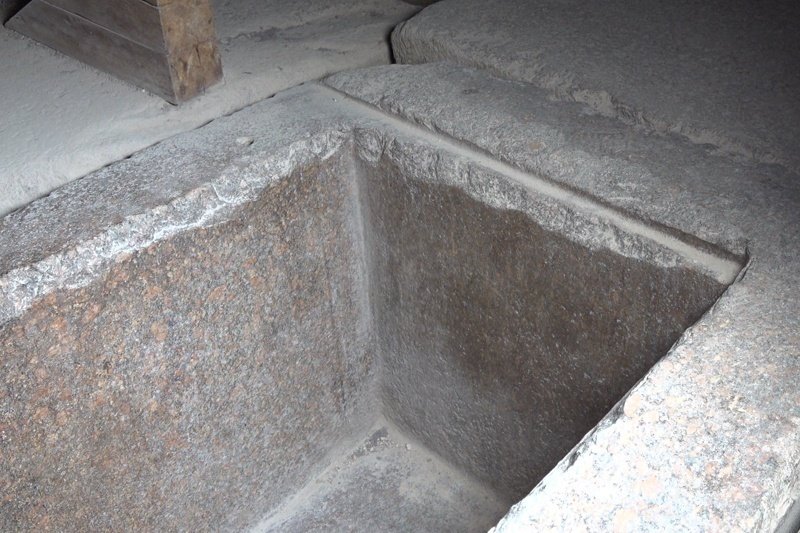
Pyramid of Khafre 3D Scanning Project - WORLD SCAN PROJECT’s Challenge
One of the most important archaeological sites in ancient Egyptian history is the Great Pyramids. Among them, the second largest, the Pyramid of Khafre, captivates visitors with its majestic presence and the remnants of its stunning white casing stones, which demonstrate the king's prestige and the advanced architectural skills of the time.
The World Scan Project (W.S.P) team collaborated with Dr. Yukinori Kawae, an Egyptologist at Nagoya University and an Emerging Explorer of the National Geographic Society, to conduct a joint survey of Pyramid of Khafre.

Photo by Mgiganteus1 via Wikimedia Commons (CC BY-SA 3.0)
Ancient Egypt's Enigmatic King
Khafre, who ruled Egypt during the Fourth Dynasty, succeeded his father, Khufu, to the throne. While it's known that he had several wives and children, specific records of how he ruled Egypt remain elusive, and there are varying theories about the length of his reign, leaving him shrouded in mystery.

The Pyramid of Khufu, towering with overwhelming presence, is his most significant architectural achievement. Besides, the mortuary temple near the pyramid and the Great Sphinx are other important symbols that help to preserve the mystery of ancient Egypt.

Photo by Hamish2k via Wikimedia Commons (CC BY-SA 3.0)
The magnificent Pyramid of Khafre
The Egyptian name of the pyramid was Wer(en)-Khafre, meaning "Khafre is Great", and true to its name it is massive, with a height of about 143 meters and a base of about 215 meters. It was built between the pyramid of his father, King Khufu, and that of his son, King Menkaure. Although it is 3 meters shorter than Khufu's pyramid, its base is on a plateau 10 meters higher and its steeper angle of inclination gives it a visually taller appearance.
Of particular note is the highly polished white limestone used to cover the surface, some of which remains at the top of the pyramid. This unique feature, combined with the red granite of the lower sections and the white limestone of the upper sections, would have made the pyramid glow in the sun when it was built.

Inside the Pyramid of Khafre
The Great Pyramids have different internal structures, and the interior of Khafre's Pyramid is relatively simple, with two main passages, a subsidiary chamber, and a burial chamber at the deepest point. Unlike later tombs, such as those of Seti I or Ramesses VI, which are lavishly decorated with reliefs and murals, the interior of Khafre's pyramid has no decorations. However, this simplicity may hint at a deeper insight into the ancient Egyptian view of the afterlife.

The Pyramide of Khofru , Gyza, Egypt
Photo by Leon petrosyan via Wikimedia Commons (CC BY-SA 4.0)
What is distinctive about the interior of King Khafre's pyramid is that it has two entrances. One is located 11 meters above ground, and the other was built on the ground slightly away from the pyramid. The passageways extending from each entrance merge on their way to the burial chamber. The upper passage, known as the "Red Passage", is made of red granite, while the lower passage, known as the "White Passage", is made of limestone. Unfortunately, the reason for having two entrances remains unclear.

The Pyramid of Khofru , Giza, Egypt
Photo by Leon petrosyan via Wikimedia Commons (CC BY-SA 4.0)
Khafre's Burial Chamber
At the end of the horizontal passage is the burial chamber, which is located at the boundary between aboveground and underground, indicating the sun worship (above ground) and the worship of Osiris, the god of the underworld (underground) during the reign of Khufre. The gabled roof structure is designed to distribute the weight over the burial chamber where Khafre's sarcophagus was eventually placed.

Khafre's stone sarcophagus has a sliding lid and is sunk partially in the thick paving stones. Due to looting, no mummy was found inside the sarcophagus, but the bones of a bull, an symbol of the god Osiris, were discovered, suggesting that they were offered in Khafre's place. In addition, traces of the canopic chest, used to store the Khafre's organs, were also found in a pit in the floor.


Making the world, the future, and curiosity closer
Khafre's Pyramid is a valuable relic, preserving the appearance of the pyramids at the time of their construction. However, many mysteries remain, such as why some of the casing stones did not collapse and the reason for the two entrances.
To solve these ancient mysteries, the World Scan Project is digitizing this and other ancient sites using 3D scanning technology. The data obtained from these scans is invaluable to researchers, providing new insights into ancient Egyptian life, beliefs, and technology. If you're interested, please follow and support the activities of the World Scan Project.
Please also check out this video about the Pyramid of Khafre.
この記事が気に入ったらサポートをしてみませんか?
